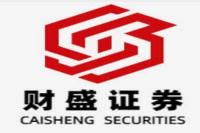Revitalizing Urban Landscapes: A Deep Dive into China's Old Neighborhood Renewal Program
Meta Description: China's ambitious plan to renovate aging urban neighborhoods is transforming cities, improving living standards, and boosting local economies. This article explores the program's progress, challenges, and future implications.
Imagine stepping into a bustling neighborhood in a Chinese city, where aging buildings, worn-out infrastructure, and a lack of green spaces create a sense of stagnation. Now, picture the same neighborhood transformed into a vibrant hub brimming with life, boasting modern amenities, lush parks, and a renewed sense of community. This is the reality that China's ambitious old neighborhood renovation program is bringing to life.
The program, launched in 2019, aims to revitalize aging urban areas and improve the quality of life for millions of residents. It's a monumental task, requiring a multi-pronged approach that encompasses infrastructure upgrades, community development, and economic revitalization.
A Tale of Two Cities: Exploring the Program's Impact
The program's success can be seen in cities like Shanghai and Beijing, where once-dilapidated neighborhoods have been reborn as modern, sustainable communities. In Shanghai's Xuhui district, for instance, the program has injected new life into aging "shikumen" buildings, preserving their historical charm while adding modern conveniences. These renovations have not only improved living conditions but also sparked a revival of local businesses and cultural attractions.
Beyond Bricks and Mortar: The Human Element
The program's impact extends beyond physical renovations. It's about fostering a sense of community and belonging among residents. By creating shared spaces, promoting social activities, and empowering local communities, the program is weaving a tapestry of interconnectedness and shared experiences.
The Road Ahead: Challenges and Opportunities
While the program has achieved significant progress, challenges remain. The need for sustainable funding, effective community engagement, and a focus on inclusivity are crucial aspects that need to be addressed.
Delving Deeper: Unveiling the Program's Keys to Success
1. Holistic Approach: The program's success hinges on a holistic approach that encompasses infrastructure upgrades, community building, and economic development.
2. Community Engagement: Active participation from residents in planning and implementation is essential, ensuring that the program aligns with their needs and aspirations.
3. Targeted Investments: The program prioritizes infrastructure upgrades, including water and sanitation systems, energy efficiency improvements, and green spaces.
4. Economic Revitalization: The program aims to boost local economies by creating new job opportunities and fostering entrepreneurship.
5. Sustainable Development: The program emphasizes environmental sustainability by promoting green building practices, renewable energy, and waste management solutions.
The Bottom Line: A New Chapter for Urban China
China's old neighborhood renovation program is rewriting the narrative of urban development, showcasing the power of comprehensive planning, community involvement, and sustainable practices. By rejuvenating aging neighborhoods, the program is not only improving living standards but also creating vibrant, inclusive, and resilient urban landscapes for generations to come.
FAQs
Q1: How many neighborhoods have been renovated under the program?
A: As of the latest data, over 4.2万个 (42,000) neighborhoods have been renovated nationwide, with an ambitious goal of 5.4万个 (54,000) by the end of 2024.
Q2: What are the key challenges facing the program?
A: Challenges include securing consistent funding, ensuring equitable distribution of resources, and engaging communities in the renovation process.
Q3: What are the long-term benefits of the program?
A: Long-term benefits include improved living conditions, enhanced social cohesion, boosted local economies, reduced urban sprawl, and a more sustainable urban environment.
Q4: What role does technology play in the program?
A: Technology is playing an increasing role in the program, with innovations in building materials, energy efficiency, and community engagement platforms.
Q5: How does the program contribute to China's broader urban development goals?
A: The program aligns with China's overall strategy of promoting sustainable urban development, fostering social inclusion, and building vibrant communities.
Q6: What are the lessons learned from the program that can be applied to other urban renewal initiatives globally?
A: The program's success highlights the importance of holistic planning, community engagement, and a focus on sustainable development, offering valuable insights for urban renewal efforts worldwide.
Conclusion
China's old neighborhood renovation program stands as a testament to the nation's commitment to improving the lives of its citizens and creating sustainable, vibrant urban spaces. The program's success is a beacon of hope, demonstrating that with careful planning, community participation, and a focus on long-term sustainability, aging urban areas can be transformed into thriving hubs of activity and innovation. As the program continues to evolve, it promises to shape the future of urban development in China and beyond, inspiring other nations to embrace inclusive, sustainable, and people-centered approaches to urban renewal.



